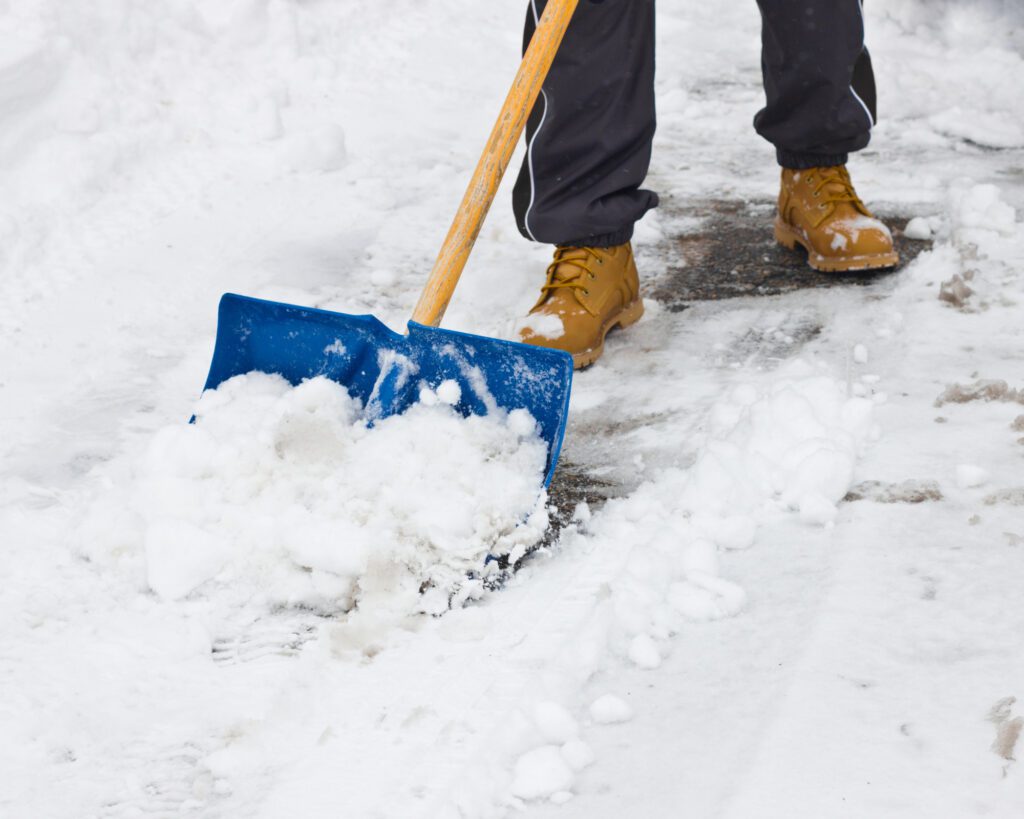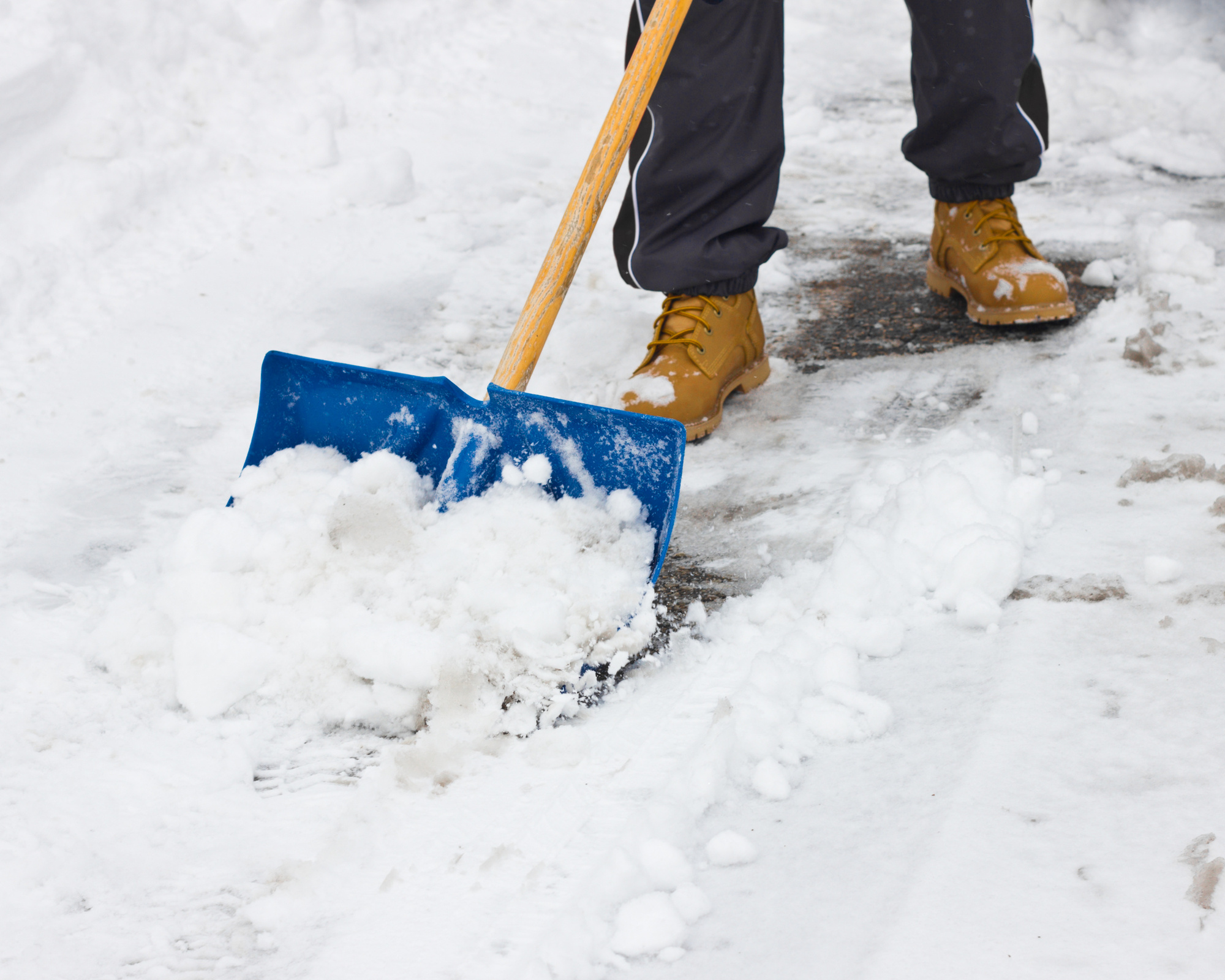
The winter season has arrived, and you know what that means—ice and snow, and a lot of it.
Shoveling can only do so much, but the only real way to tackle all those icy pavements, sidewalks, and driveways is to have some quality ice melt on hand. Whether you’re a homeowner or a business proprietor, you’ll want to take the appropriate steps to prepare for winter weather. The absolute last thing you want is a nasty slip and fall, and consequent injuries, due to black ice.
Don’t worry—we’ve got you covered. In the following article, we’ll go over the various types of ice melt, how they work, and some things to consider when choosing between the various ice melt options.
The Low-Down on Ice Melt
So what do you need to know about melting ice?
Well, in simple terms, ice melt is something that you apply before an impending snowstorm or other weather event that is likely to produce snow and ice; conversely, it can also be scattered on the new snow or ice.
The way it works is by raising the freezing point of water. This helps to prevent ice from accumulating, or helps to turn the existing ice into a melted slush. The idea is to keep ice from getting a strong foothold on pavement and other surfaces, so it won’t continue to grow with further precipitation.
Why Are There Different Types of Ice Melt?
So we know that ice melt, which is also known as a deicing agent, functions by obviating the formation of ice through reducing the freezing point of water.
Deicing agents are remarkably useful for cleaning ice, since it prevents the heavy concentration and buildup of snow and ice. This is why it’s best to cast some ice melt on pavements, driveways, and other surfaces before the anticipated snowfall—after all, this will make your life much easier.
Fortunately, ice melt comes in many different forms for different uses. There’s the standard rock salt ice melts, like the kind used by city and highway services. You can also find liquid ice melts, which often come as a brine so you can use them in sub-freezing temperatures.
Brittle ice is weakened by applying the liquid ice melt to the ice and snow. In extreme freezing conditions, these liquid deicers are probably a good choice. Brine may be applied in a hand spray or by tanker trucks, depending on the scale of your deicing operation.
The Most Common Types of Ice Melt
Each of the different types of ice melt have their particular strengths and weaknesses, which are suited to specific situations.
Which is the best choice will depend on how you intend to use the ice melt. So let’s take a look at some of the different ice melt options in greater detail.
1. Sodium Chloride Liquid Brine
Sodium chloride is a liquid-type ice melt, which is usually formed of one-quarter salt and three-quarters water. Comparing this brine to rock salt, it’s much easier on the environment, since it uses far less salt.
It’s also considerably less wasteful than solid rock salt since it’s less liable to being dispersed by the wind. Just apply the sodium chloride (salt) brine to the required surface the night before the snowfall to achieve optimum results.
2. Sodium Acetate
Sodium acetate is an environmentally friendly choice for an ice melt—something not all ice melts can boast.
For one thing, it’s free of damaging biodegradable compounds, and it has no adverse effects, such as metal corrosion. On the other hand, sodium acetate is considered an expensive alternative.
This type of deicing agent has been successfully used on airport runways, for example, so you know it’s got to pack some serious ice-melting power.
3. Calcium Chloride
Calcium chloride is a popular choice for an ice melt, particularly with those concerned about the quality of their lawn maintenance.
Calcium chloride is less expensive than sodium acetate, which is a plus, but it is somewhat more expensive than other ice melts on this list.
As with sodium chloride, it works by reducing the freezing point of water and then generates heat through an exothermic reaction, causing the ice to melt. Calcium chloride is well suited to concrete surfaces, and will even work in temperatures as low as -25 degrees Fahrenheit.
4. Blends
A blend is much what it sounds like—a combination of sodium chloride, as high-quality solar or rock salt, with some other ice melt, such as calcium chloride. The reason behind creating these blends is to combine, in some cases, fast-acting ice melts with longer-lasting forms that will keep ice from reforming or accumulating.
6. Potassium Chloride
Potassium chloride is another choice, but it is not a good choice for areas with severe winters.
The reason is because this ice melt option won’t reduce the ice to temperatures lower than twenty-five degrees Fahrenheit. So if you know that you’re likely to experience a great deal of dangerous ice might, it’s probably wisest to invest in an extra-strength ice melt product.
But when it comes to environmental considerations, it’s tough to do better than potassium chloride. It is, without question, a much better choice for the environment than many other ice melter products. Keep in mind, though, that it’s more expensive than other kinds of ice melts, and it doesn’t pack the same punch as more powerful deicers.
So if you live in an area that only occasionally needs ice melting, doesn’t really experience severe winters, and cost is no object, you might consider giving potassium chloride a try.
Let Bam’s Landscaping Help You Keep Your Landscaping Snow Free
Winter is upon us, and with it comes the hassle of trying to keep your driveway, sidewalks, and landscaping snow free. This guide can help you find the right ice melt to, if not keep the snow away permanently, then at least alleviate some of your snow and ice worries.
But you don’t have to handle this problem on your own. At Bam’s Landscaping, we have a team of dedicated personnel who can take care of everything from your landscaping needs in the summer, to snow removal in the winter.
So go ahead and contact us today to see how we can help with all of your landscaping questions and concerns.



